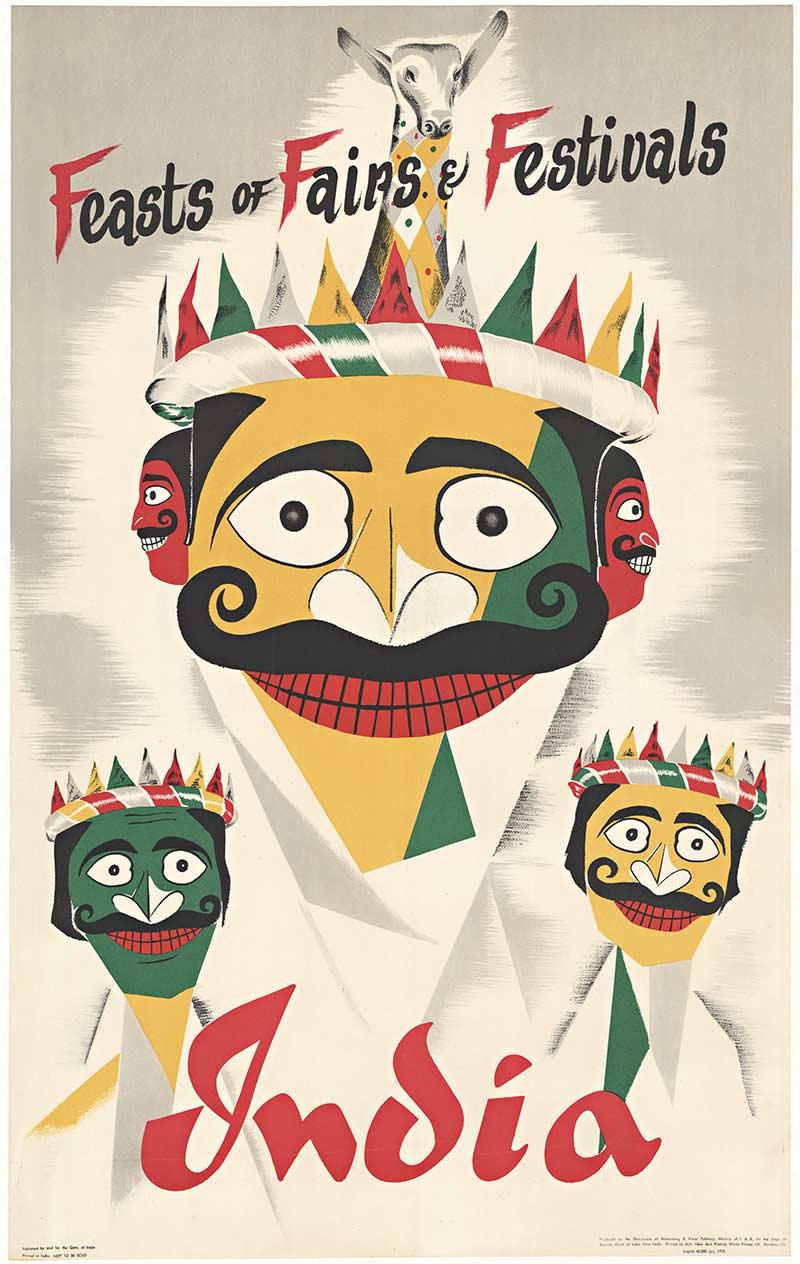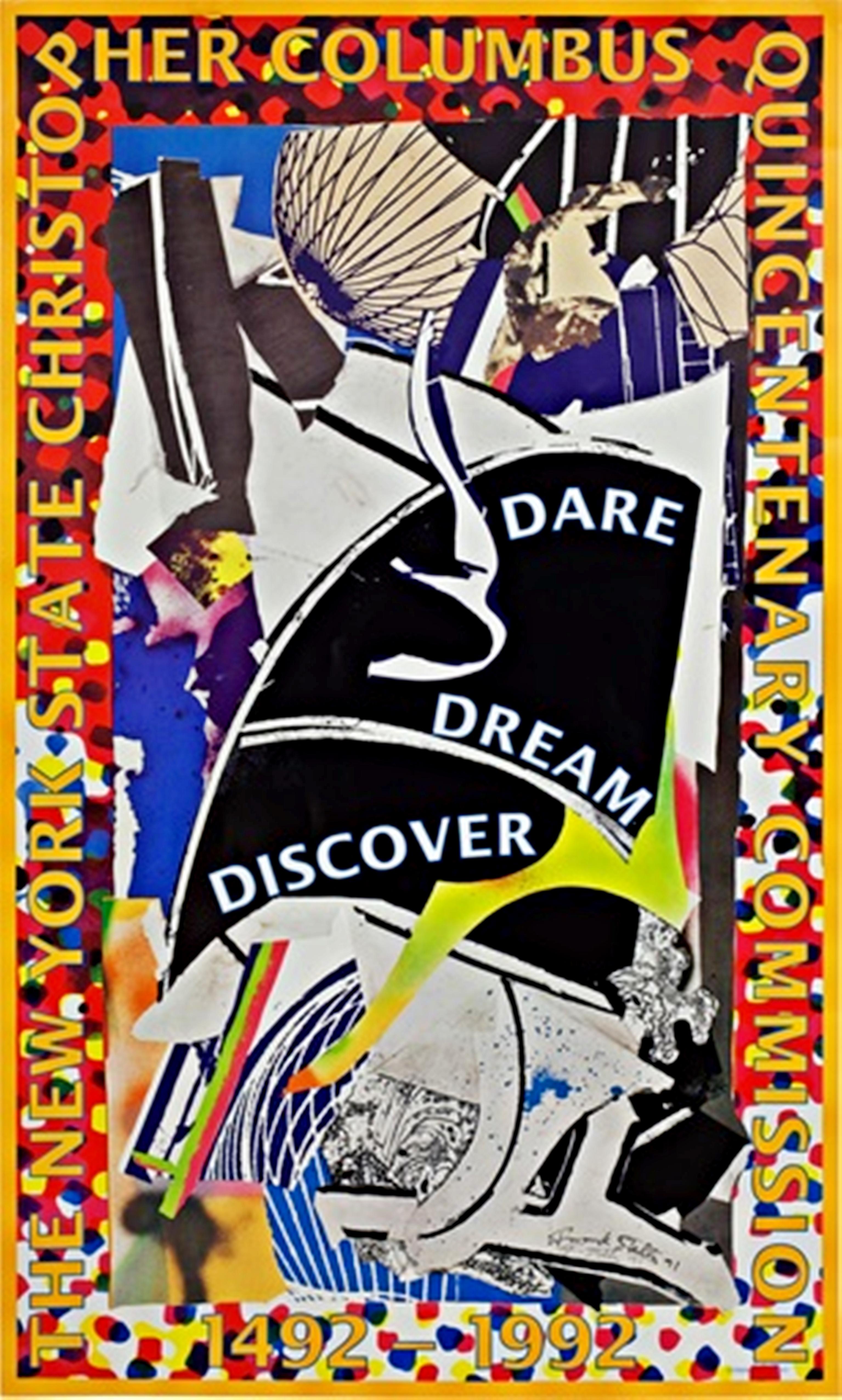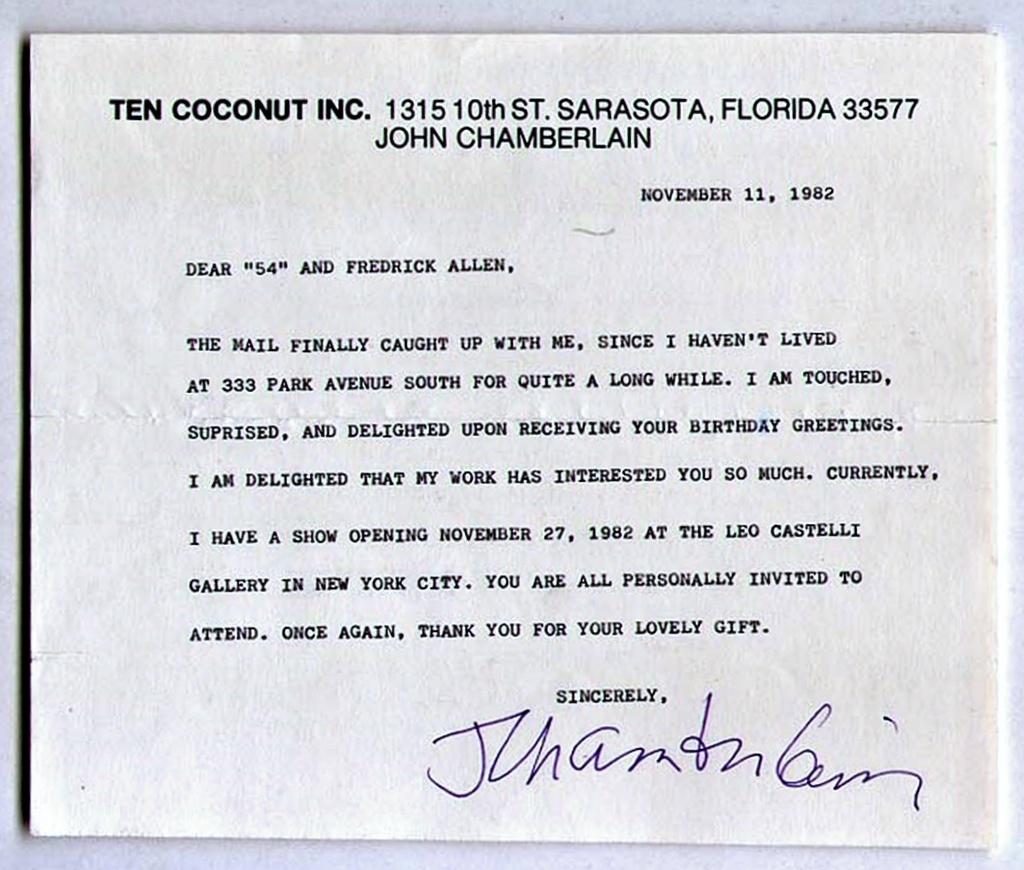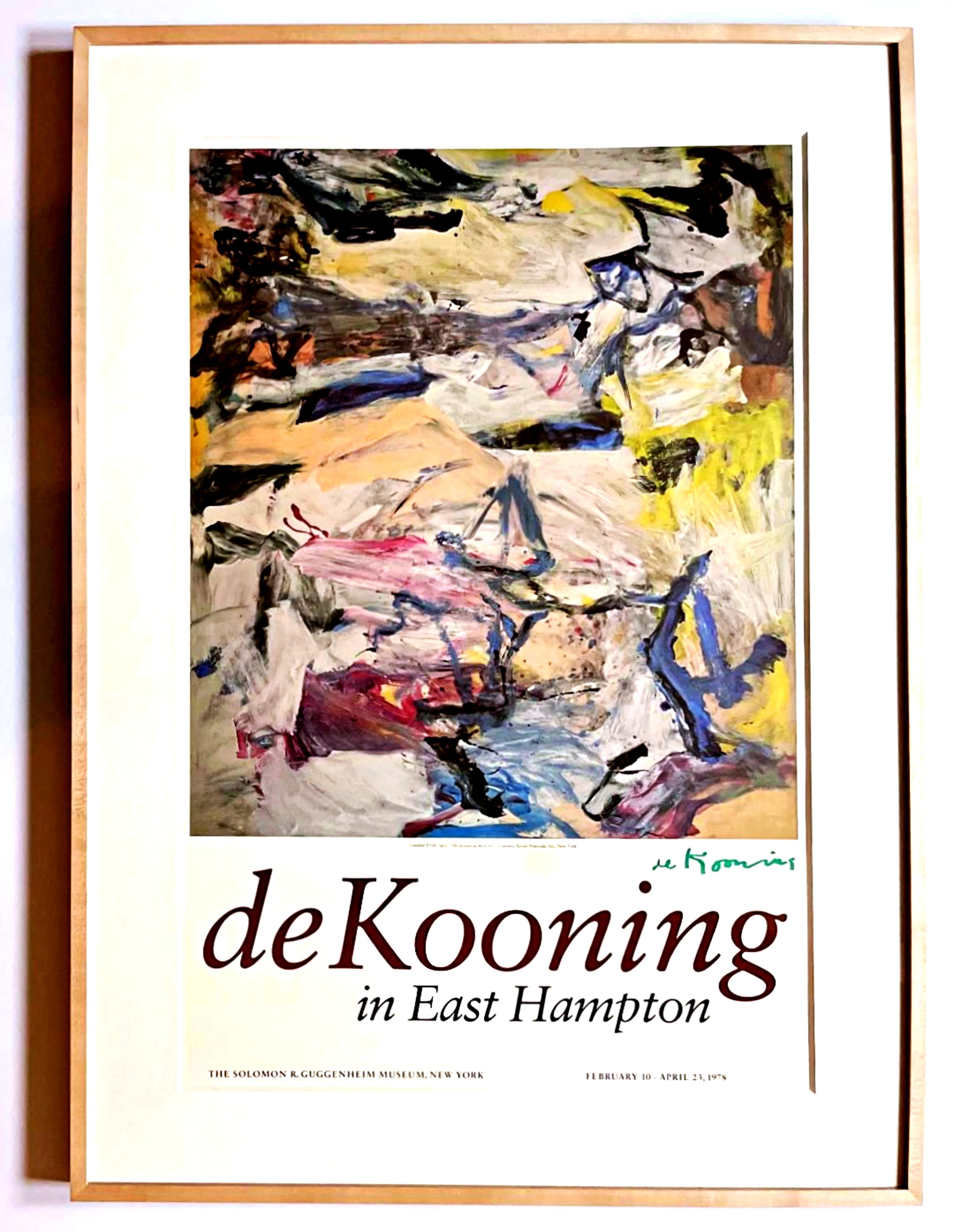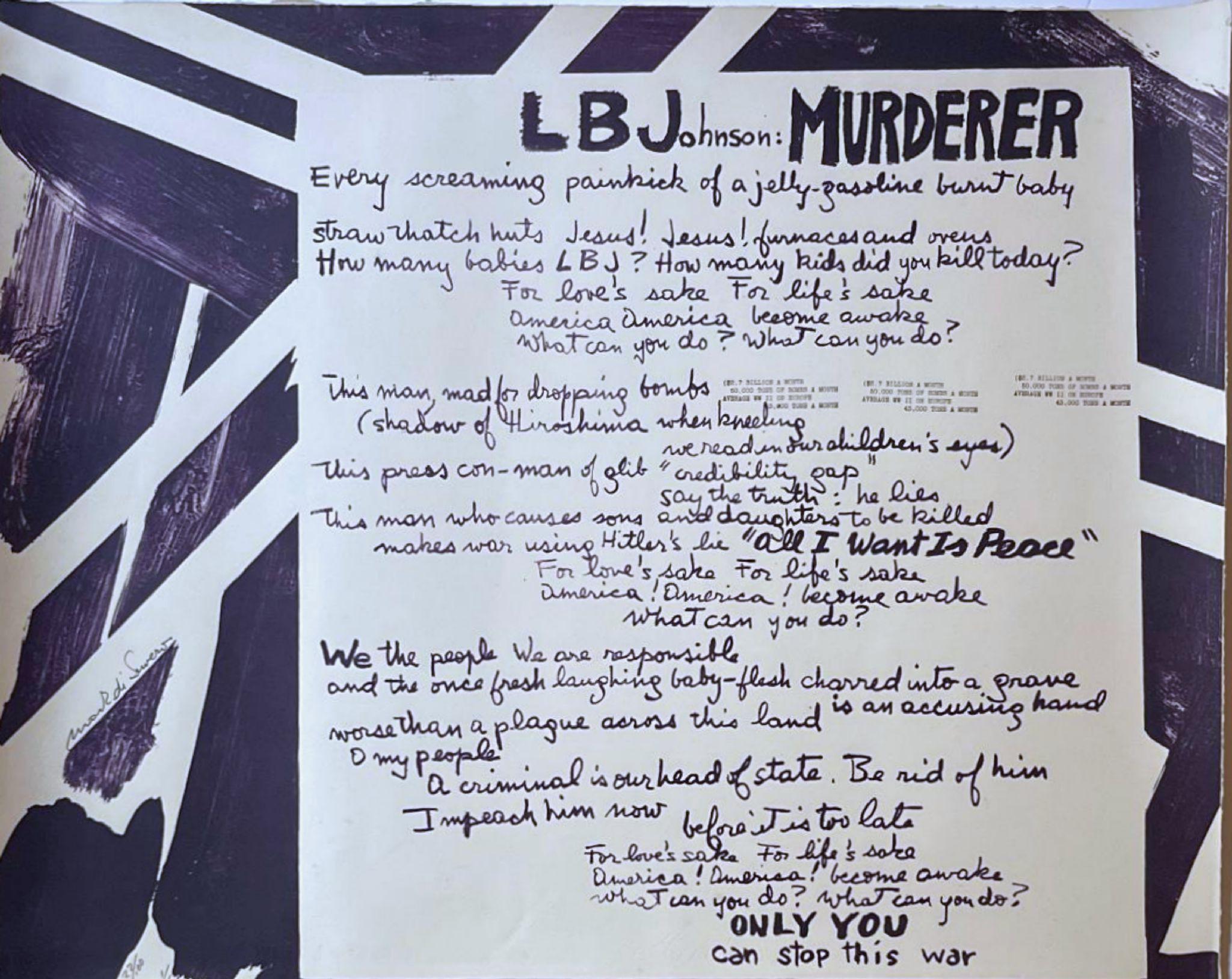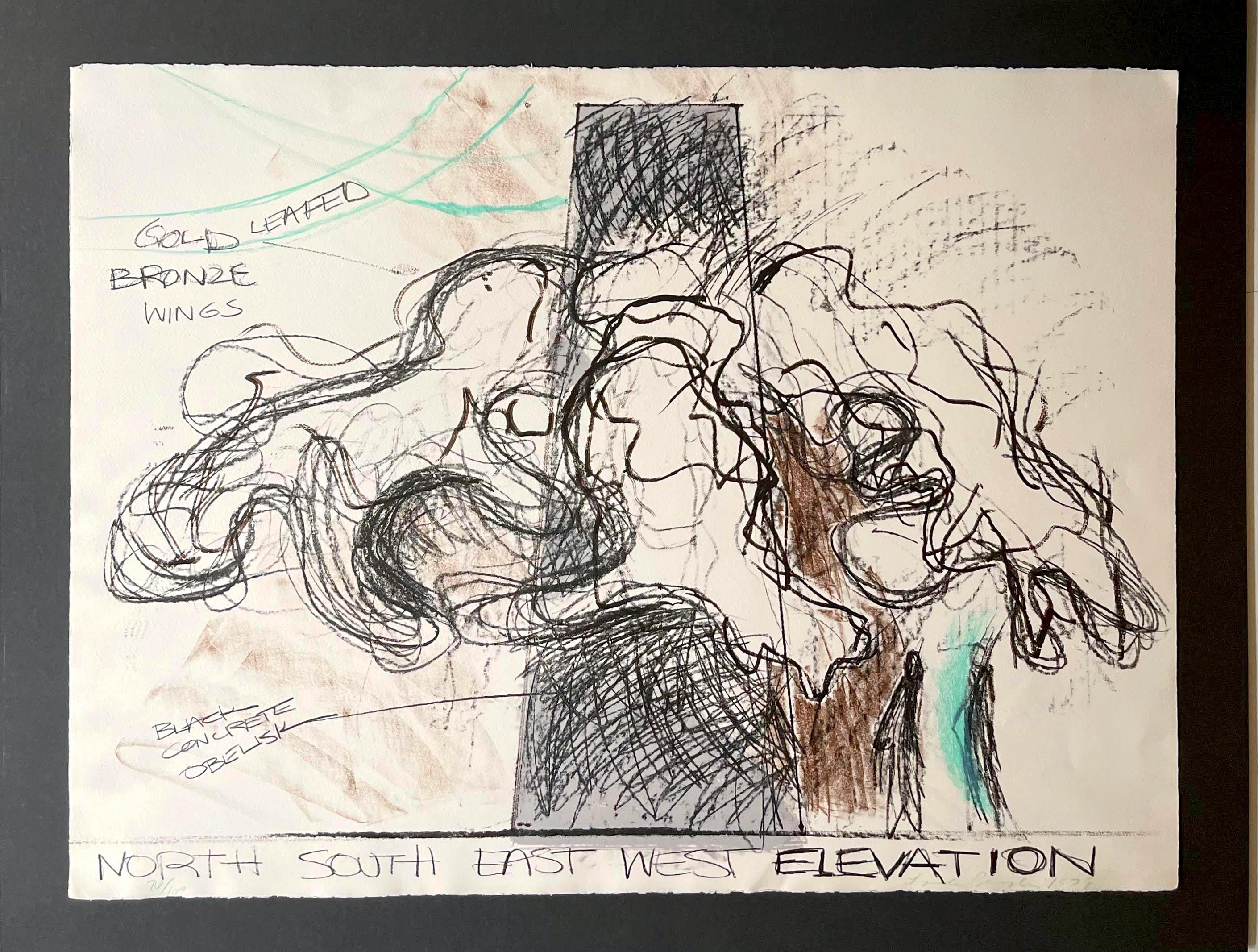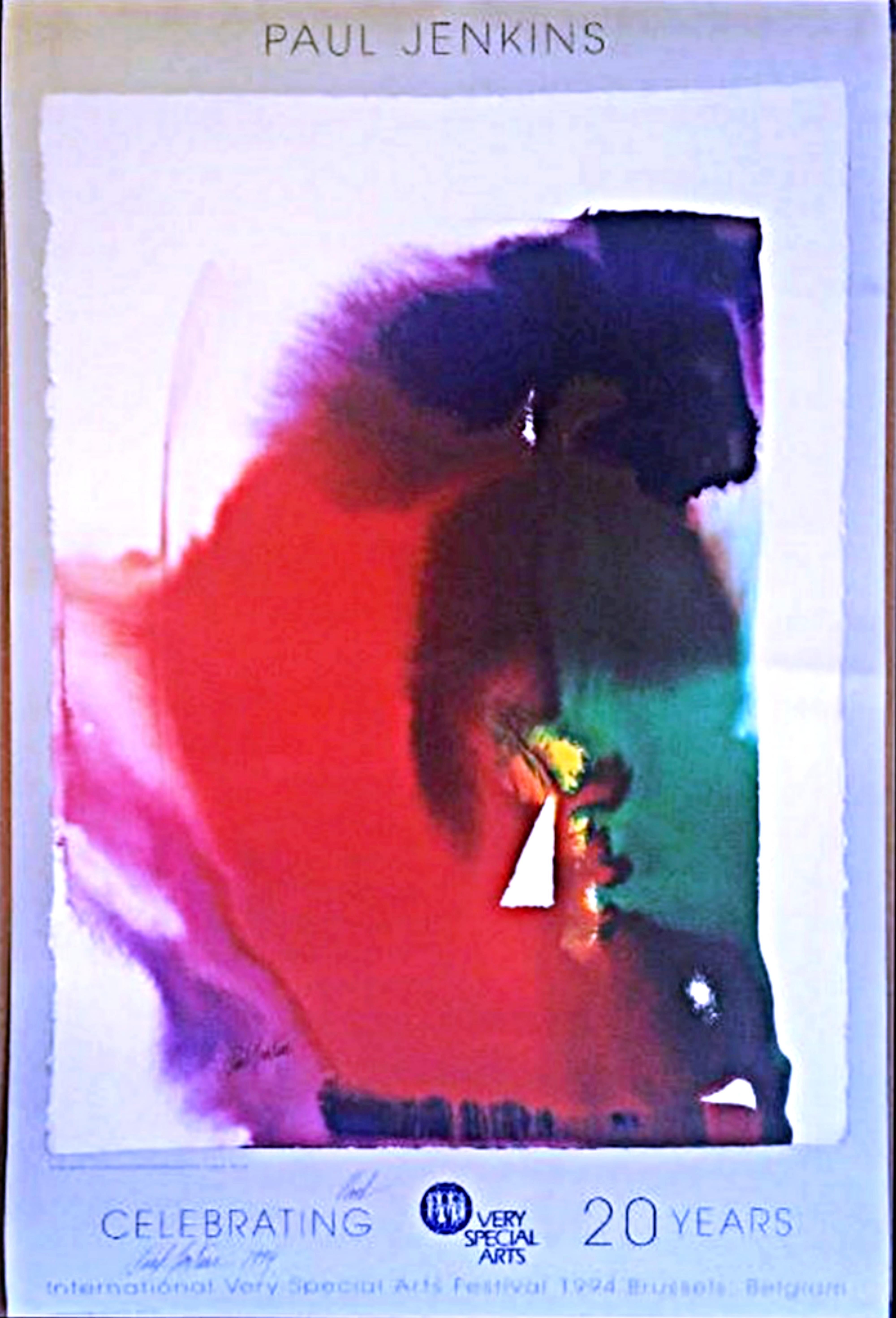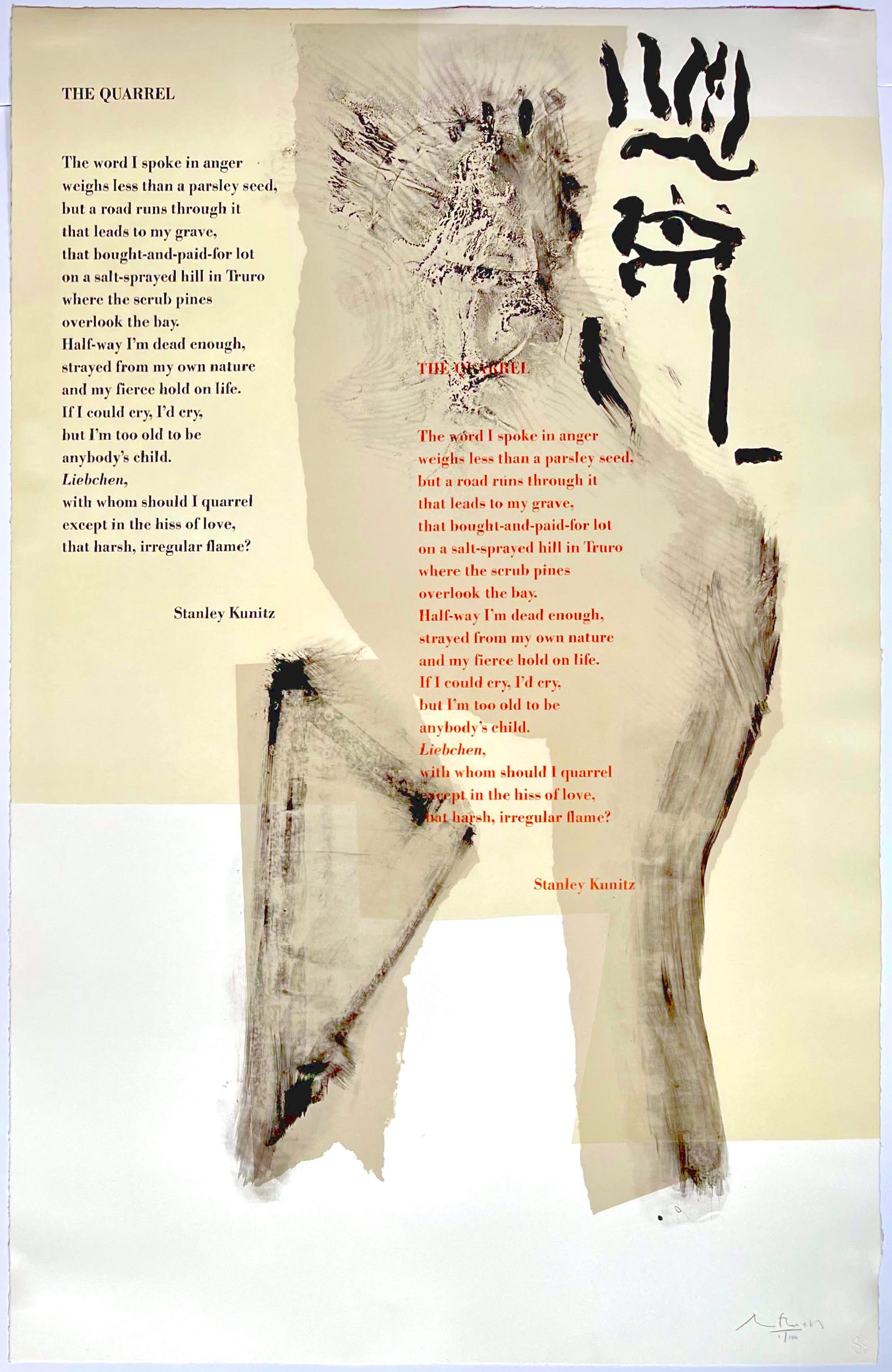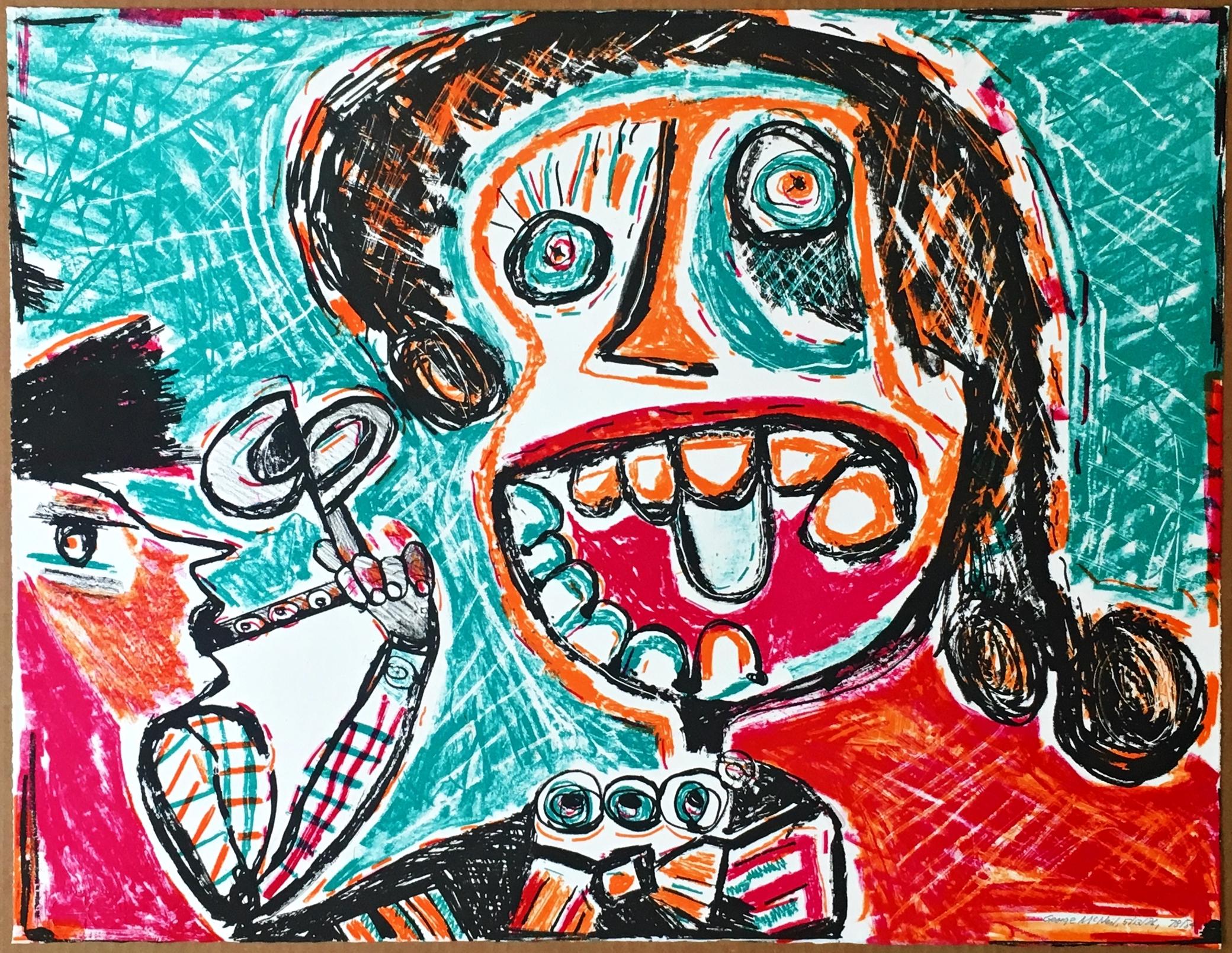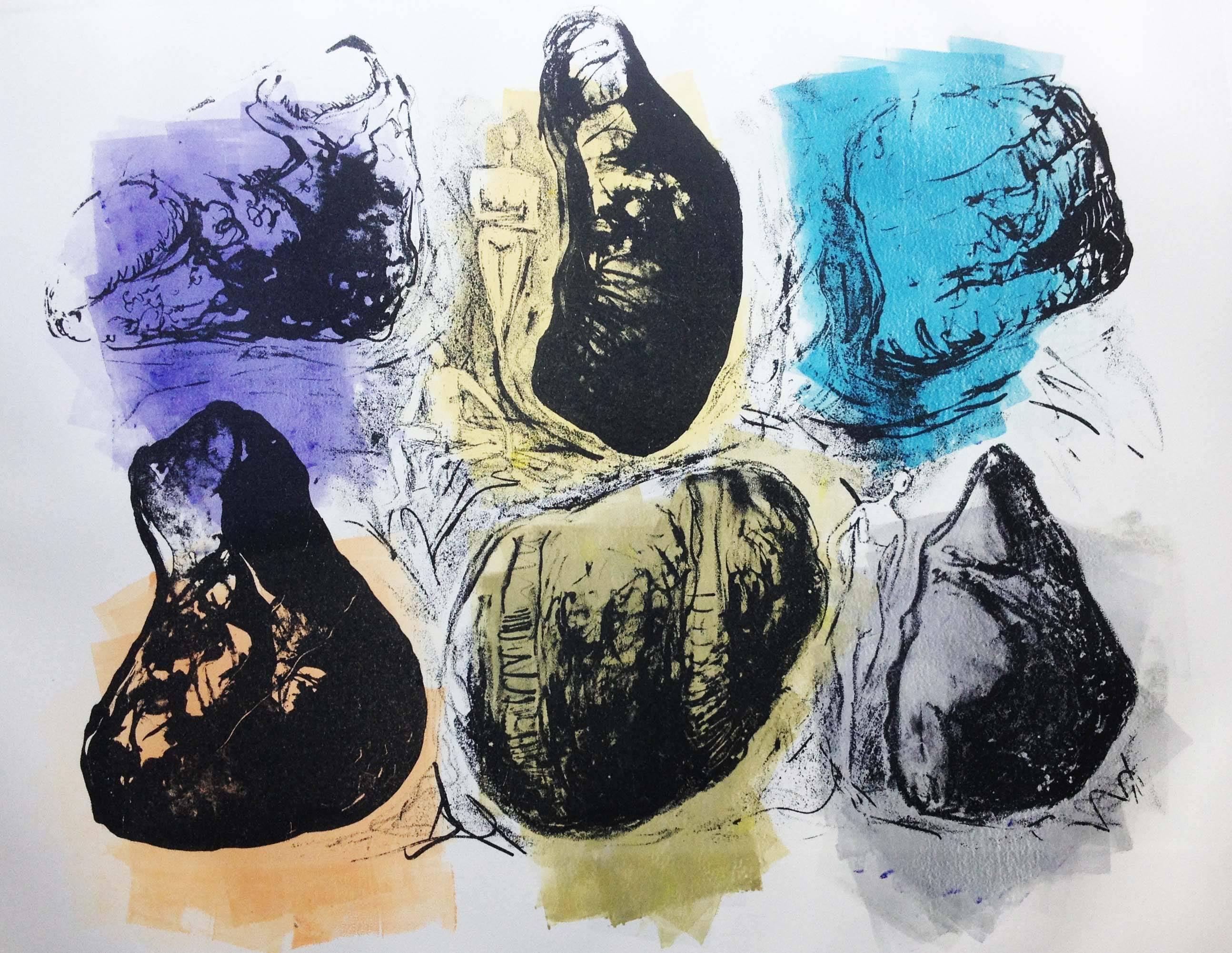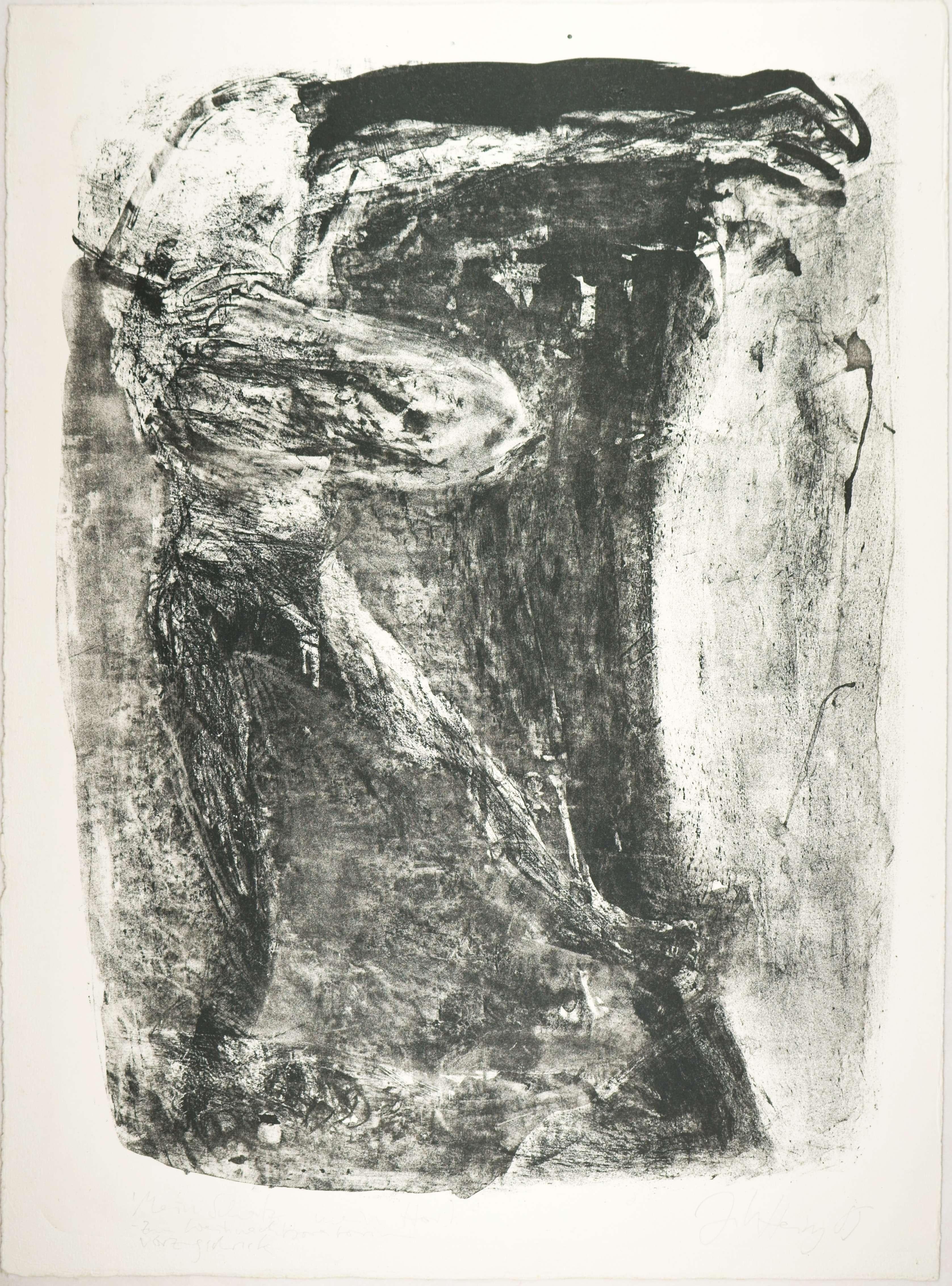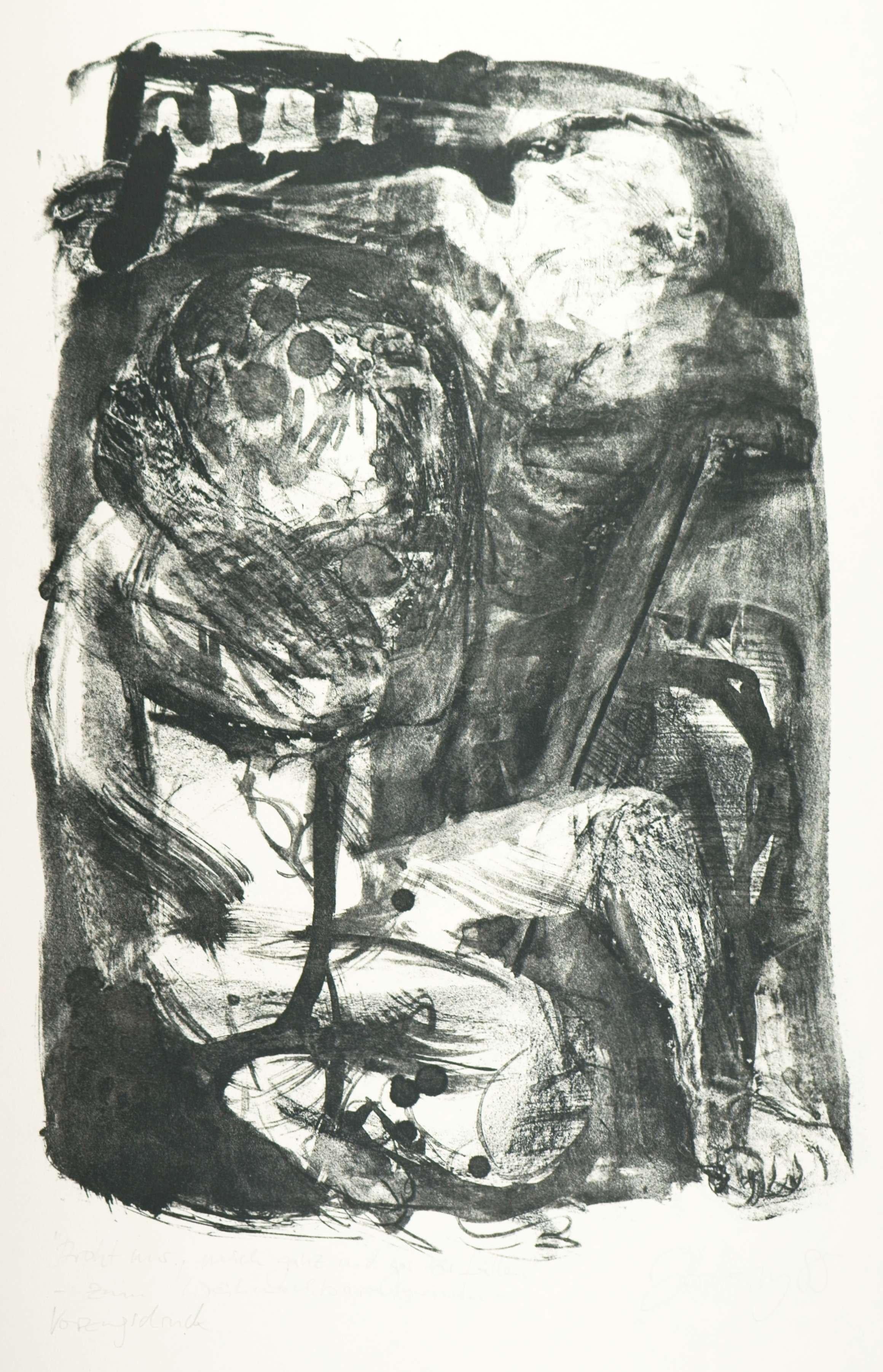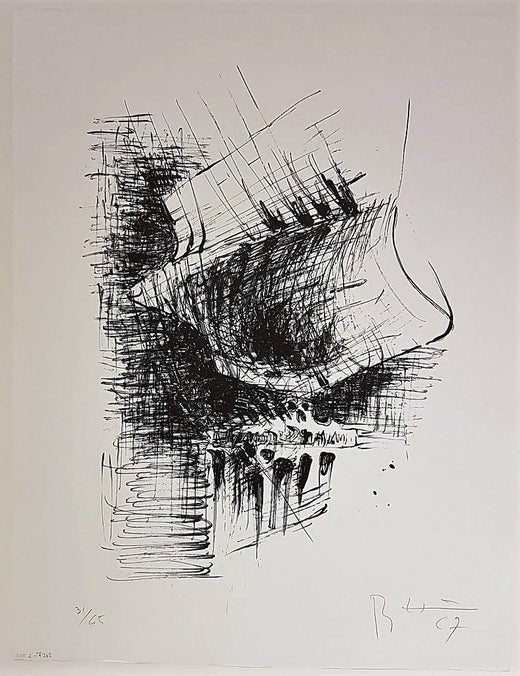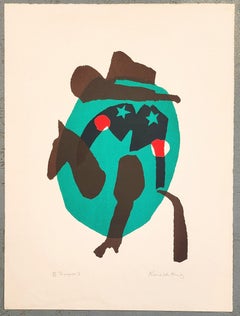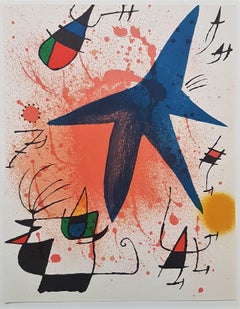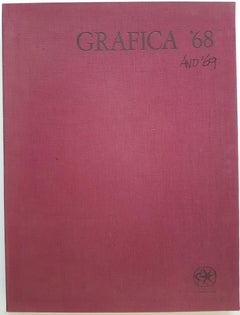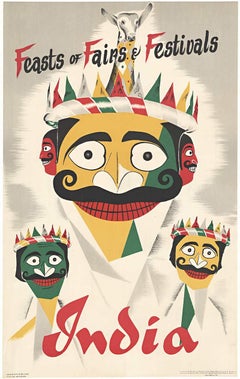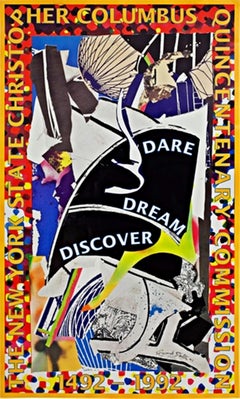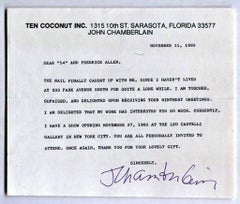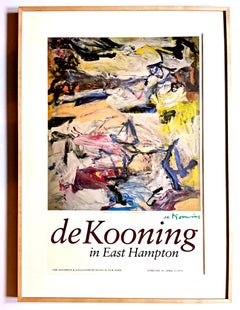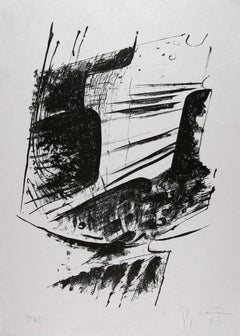
Untitled Abstract Expressionist Composition
View Similar Items
Want more images or videos?
Request additional images or videos from the seller
1 of 6
Bernhard HeiligerUntitled Abstract Expressionist Composition1966
1966
Price:$300
$400List Price
About the Item
- Creator:Bernhard Heiliger (1915 - 1995, German)
- Creation Year:1966
- Dimensions:Height: 33.9 in (86.11 cm)Width: 23.8 in (60.46 cm)
- Medium:
- Movement & Style:
- Period:
- Condition:
- Gallery Location:Kansas City, MO
- Reference Number:Seller: BHE_1802_011stDibs: LU60832524261
Bernhard Heiliger
Bernhard Heiliger (11 November 1915, Stettin - 26 October 1995, Berlin) was a German artist. He was considered "West Germany's foremost sculptor", and his large public artworks are a prominent presence in many German cities, especially Berlin. Heiliger began his artistic education with an apprenticeship as a stone carver and a course of study at the Stettiner Werkschule für Gestaltende Arbeiten from 1933-36 under Kurt Schwerdtfeger, who had been a student of the Bauhaus. After this he attended the Staatlichen Hochschule für bildende Künste (National College of Visual Arts) in 1938, where he studied under Arno Breker. In 1941 he was drafted into the army and served as a radio operator on the Eastern Front for two years, before he received an exemption from military service through the intervention of Breker. Despite this he was drafted again in 1944, after which he fled as a deserter through northern Germany. In May 1946 Heiliger exhibits with the painter Fritz Ascher at the Karl Buchholz Gallery in Berlin. Heiliger's design for the Memorial to Unknown Political Prisoners (1953) brought him his first international recognition, earning him the Prize of the National Government and a prize from the Institute of Contemporary Arts. This was followed by his participation in several prominent international exhibits, such as the documenta I & II in Kassel (1955 and 1959) and the Venice Biennale (1956), and by commissions such as sculptures for the German pavilion at the 1958 World's Fair in Brussels. In 1956 he became a member of the Berlin Academy of Art. In 1974 he was recognized with the Federal Cross of Merit, and in 1984 was awarded an honorary membership in the Deutscher Künstlerbund. He died in Berlin in 1995, and was buried in Berlin's Dahlem Cemetery (Friedhof Dahlem). Heiliger's diverse output stretches from his early, organically abstracted figures to his late nonobjective, geometric abstractions. His early work (1945–1962), focuses on the human figure, which is treated in an organic style influenced by Aristide Maillol and Henry Moore. Also from this period is a series of portrait busts of prominent contemporary Germans. The artist departed from the human figure in his second period (1962–1970), instead developing imagery of the "flight of birds and vegetable forms"[4] influenced by the nonrepresentational Informel style. The seven-meter-high The Flame (Flamme, 1962–63), commissioned by the city of Berlin for Ernst-Reuter-Platz,[1] is considered the key work in the transition between the early and middle periods.[4] The Five Continents (Die fünf Erdteile, 1961), by contrast, still alludes to the human figure in the torso-like shapes that make up the composition.
About the Seller
5.0
Gold Seller
Premium sellers maintaining a 4.3+ rating and 24-hour response times
Established in 2016
1stDibs seller since 2017
1,079 sales on 1stDibs
Authenticity Guarantee
In the unlikely event there’s an issue with an item’s authenticity, contact us within 1 year for a full refund. DetailsMoney-Back Guarantee
If your item is not as described, is damaged in transit, or does not arrive, contact us within 7 days for a full refund. Details24-Hour Cancellation
You have a 24-hour grace period in which to reconsider your purchase, with no questions asked.Vetted Professional Sellers
Our world-class sellers must adhere to strict standards for service and quality, maintaining the integrity of our listings.Price-Match Guarantee
If you find that a seller listed the same item for a lower price elsewhere, we’ll match it.Trusted Global Delivery
Our best-in-class carrier network provides specialized shipping options worldwide, including custom delivery.More From This Seller
View AllLitografia Original II
By Joan Miró
Located in Kansas City, MO
Joan Miró
Litografia Original II
Color Lithograph
Year: 1975
Size: 12.5 × 9.6 inches
Catalogue Raisonné: Queneau, Miro Lithographe II, 1952-1963, p.35
Publisher: Maeght Editeur, Pari...
Category
1970s Abstract Expressionist Abstract Prints
Materials
Lithograph
Trooper II
Located in Kansas City, MO
Ronald King
Trooper II
Year: 1970
Color Lithograph
Size: 27.5x20.5in
Edition: 50
Signed, inscribed and numbered by hand
COA provided
Ref.: 924802-1359
Bor...
Category
1970s Modern Figurative Prints
Materials
Lithograph
$366 Sale Price
38% Off
Litografia Original I
By Joan Miró
Located in Kansas City, MO
Joan Miró
Litografia Original I
Color Lithograph
Year: 1975
Size: 12.5 × 9.6 inches
Catalogue Raisonné: Queneau, Miro Lithographe II, 1952-1963, p.35
Publisher: Maeght Editeur, Paris...
Category
1970s Surrealist Figurative Prints
Materials
Lithograph
Price Upon Request
(Partial) Portfolio containing 3 (three) lithographs and etchings
By Grafica
Located in Kansas City, MO
Grafica '68
(Partial) Portfolio containing 3 (three) lithographs and etchings
Originally issued with 10 Lithographs, Silk Screens and Etchings, of which 7 (seven) are missing
Year: 1968
Edition: 100
Size: 17.6 x 23.6 in. or 23.6 x 17.6 in.
Publisher: Il Torcoliere, Rome - Italy
Signatures:
Sheets signed and numbered by hand
Comes with folio box and individual artists' presentation sheets.
---------------------------------
Artists works included:
RENZO VESPIGNANI
"Report on the artist"
Year: 1968
Medium: Lithograph in two colors
Edition: 100
Size: 17.6 x 23.6 in.
Publisher: Il Torcoliere, Rome - Italy
Signed and numbered
Ref: RVE_1909_01
LUCIANO DE VITA
"Le cavalier inconnu"
Year: 1968
Medium: Etching
Edition: 100
Size: 23.6 x 17.6 in.
Publisher: Il Torcoliere, Rome - Italy
Signed and numbered
Ref: LDV_1909_01
PIERO GUCCIONE
"Images"
Year: 1968
Medium: Lithograph in four colors
Edition: 100
Size: 23.6 x 17.6 in.
Publisher: Il Torcoliere, Rome - Italy
Signed and numbered
Ref: PGU_1909_01
=======================
Renzo Vespignani was an Italian painter, printmaker and illustrator. Vespignani illustrated the works of Boccaccio, Kafka and T. S. Eliot, among others. In 1956, he co-founded the magazine Citta Aperta and in 1963, co-founded the group II Pro e II Contro for neorealism in figure art.
----------------
Luciano De Vita ( Ancona , 1929 - 1992 ) was an Italian painter , engraver , set designer and lecturer .
Born in Ancona, De vita arrived in Bologna in the first post-war period, after having actively participated in the Second World War and having suffered the dramatic consequences. He attended the Academy of Fine Arts and was a pupil of Giorgio Morandi.
From 1962 he taught in Milan at the Brera Academy , while in 1975 he returned to Bologna where he obtained the same chair of engraving that had been Morandi's from 1930 to 1956 .
De Vita also actively dedicated himself to the theater , overseeing sets and costumes for shows that were also staged at La Scala in Milan. An example is the Turandot curated by Raoul Grassilli.
----------------
Emilio Vedova (9 August 1919 – 25 October 2006) was a modern Italian painter...
Category
1960s Modern Figurative Prints
Materials
Etching, Lithograph, Screen
Sleeved Laptop
Located in Kansas City, MO
Andrzej Zielinski
Sleeved Laptop
Year: 2015
Lithograph
Edition: 22
Paper: Arches, Buff
Paper Size: 26.5 x 20.5 inches
Image Size: Same
Signed and numbered by hand
COA provided
Andrzej Zieliński (born 1976, Kansas City, Missouri, USA) is an American painter.
Zieliński received his BFA from The School of the Art Institute of Chicago in 2002. In 2004 he earned his MFA from Yale University in New Haven, CT.
Zieliński's main body of work reflects on electronic devices that saturate our lives: cell phones, ATMs, computers, and paper shredders...
Category
2010s Contemporary Figurative Prints
Materials
Lithograph
Making Paper Pulp?
Located in Kansas City, MO
Andrzej Zielinski
Making Paper Pulp?
Year: 2017
Lithograph in black from 1 Stone & 2 Plates
Edition: 15
Paper: Magnani – Revere
Paper Size: 24.625 x 20 inches
Image Size: 23.25 x 18 inches (irregular)
Signed and numbered by hand
COA provided
Andrzej Zieliński (born 1976, Kansas City, Missouri, USA) is an American painter.
Zieliński received his BFA from The School of the Art Institute of Chicago in 2002. In 2004 he earned his MFA from Yale University in New Haven, CT.
Zieliński's main body of work reflects on electronic devices that saturate our lives: cell phones, ATMs, computers, and paper shredders...
Category
2010s Contemporary Figurative Prints
Materials
Lithograph
You May Also Like
India Feasts of Fairs & Festival original colorful vintage travel poster
Located in Spokane, WA
Original India Feasts of Fairs & Festivals vintage travel poster. Conservation linen backed in very fine condition. Ready to frame. A slight lower fold mark was professionall...
Category
1950s Abstract Expressionist Figurative Prints
Materials
Lithograph
$1,000 Sale Price
20% Off
New York State Dare, Dream Discover, Offset lithograph Hand Signed Ed. of 100
By Frank Stella
Located in New York, NY
Frank Stella
The New York State Christopher Columbus Quincentenary Commission, 1991
Offset Lithograph Printed in Colors
Signed and dated by the artist in ink on the lower right front in black ink (Edition of 100)
Limited Edition of 100 (unnumbered)
39 1/2 × 23 1/2 inches
Unframed
Accompanied by gallery issued Certificate of Guarantee
This vibrant, hand signed offset lithograph poster designed by Frank Stella commemorates The New York State Christopher Columbus Quincentenary Commission. The poster alone is uncommon, but it is extremely rare to find a hand signed edition as this one. Highly collectible and desirable! An uncommon Stella print...
Category
1990s Abstract Expressionist Abstract Prints
Materials
Ink, Lithograph, Offset
John Chamberlain, Signed Western Union cable re: sculpture show at Leo Castelli
By John Chamberlain
Located in New York, NY
John Chamberlain
Hand Signed Letter re: Leo Castelli Exhibition, 1982
Typewriter on paper (hand signed)
6 1/2 × 8 1/2 inches
Hand-signed by artist, Signed in purple felt tip marker
Hand signed telegraph/letter refers to Chamberlain's exhibition at the legendary Leo Castell Gallery.
A piece of history!
John Chamberlain Biography
John Chamberlain (1927 – 2011) was a quintessentially American artist, channeling the innovative power of the postwar years into a relentlessly inventive practice spanning six decades. He first achieved renown for sculptures made in the late 1950s through 1960s from automobile parts—these were path-breaking works that effectively transformed the gestural energy of Abstract Expressionist painting into three dimensions. Ranging in scale from miniature to monumental, Chamberlain’s compositions of twisted, crushed, and forged metal also bridged the divide between Process Art and Minimalism, drawing tenets of both into a new kinship. These singular works established him as one of the first American artists to determine color as a natural component of abstract sculpture. From the late 1960s until the end of his life, Chamberlain harnessed the expressive potential of an astonishing array of materials, which varied from Plexiglas, resin, and paint, to foam, aluminum foil, and paper bags.
After spending three years in the United States Navy during World War II, Chamberlain enrolled in the Art Institute of Chicago and Black Mountain College, where he developed the critical underpinnings of his work. Chamberlain lived and worked in many parts of the United States, moving between New York City, Long Island, Los Angeles, Santa Fe, Connecticut, and Sarasota, before finally settling on Shelter Island. In many ways, each location provoked a distinct material sensibility, often defined by the availability of that material or the limitations of physical space. In New York City, Chamberlain pulled scrap metal and twelve-inch acoustic tiles from the ceiling of his studio apartment. He chose urethane in Los Angeles in 1965 (a material he had been considering for many years), and film in Mexico in 1968. He eventually returned to metal in 1972, and, in Sarasota, he expanded the scale of his works to make his iconic Gondolas (1981 – 1982). The movement of the artist and the subsequent evolution of the work is indicative not only of a kind of American restlessness but also of Chamberlain’s own personal evolution: he sometimes described his use of automobile materials as sculptural self-portraits, infused with balance and rhythm characteristic of the artist himself.
Chamberlain refused to separate color from his practice, saying, ‘I never thought of sculpture without color. Do you see anything around that has no color? Do you live in a world with no color?’. He both honored and assigned value to color in his practice—in his early sculptures color was not added, but composed from the preexisting palette of his chosen automobile parts. Chamberlain later began adding color to metal in 1974, dripping and spraying—and sometimes sandblasting—paint and lacquer onto his metal components prior to their integration. With his polyurethane foam works, color was a variable of light: ultraviolet rays or sunlight turned the material from white to amber. It was this profound visual effect that brought the artist’s personal Abstract Expressionist hand into industrial three-dimensional sculpture. Chamberlain moved seamlessly through scale and volume, creating material explorations in monumental, heavy-gauge painted aluminum foil in the 1970s, and later in the 1980s and 1990s, miniatures in colorful aluminum foil and chromium painted steel.
Central to Chamberlain’s works is the notion that sculpture denotes a great deal of weight and physicality, disrupting whatever space it occupies. In the Barges series (1971 – 1983) he made immense foam couches, inviting spectators to lounge upon the cushioned landscape. At the end of his career, Chamberlain shifted his practice outdoors, and through a series of determined experiments, finally created brilliant, candy-colored sculptures in twisted aluminum foil. In 2012, four of these sculptures were shown outside the Seagram Building in New York, accompanied by playful titles such as ‘PINEAPPLESURPRISE’ (2010) and ‘MERMAIDSMISCHIEF’ (2009). These final works exemplify Chamberlain’s lifelong dedication to change—of his materials, of his practice, and, consequently, of American Art.
Chamberlain has been the subject of numerous solo exhibitions, including two major Retrospectives at the Solomon R. Guggenheim Museum in New York NY in 2012 and 1971; ‘John Chamberlain, Squeezed and Tied. Foam and Paper Sculptures 1969-70,’ Dan Flavin Art Institute, Dia Center for the Arts, Bridgehampton NY (2007); ‘John Chamberlain. Foam Sculptures 1966–1981, Photographs 1989–2004,’ Chinati Foundation, Marfa TX (2005); ‘John Chamberlain. Current Work and Fond Memories, Sculptures and Photographs 1967–1995,’ Stedelijk Museum, Amsterdam, Netherlands (Traveling Exhibition) (1996); and ‘John Chamberlain. Sculpture, 1954–1985,’ Museum of Contemporary Art, Los Angeles CA (1986). Chamberlain’s sculptures are part of permanent exhibitions at the Chinati Foundation in Marfa TX and at Dia:Beacon in upstate New York. In 1964, Chamberlain represented the United States in the American Pavilion at the 32nd International Exhibition of the Venice Biennale. He received many awards during his life, including a Doctor of Fine Arts, honoris causa, from the College for Creative Studies, Detroit (2010); the Distinction in Sculpture Honor from the Sculpture Center, New York (1999); the Gold Medal from The National Arts Club Award, New York (1997); the Lifetime Achievement Award in Contemporary Sculpture by the International Sculpture Center, Washington D.C. (1993); and the Skowhegan Medal for Sculpture, New York NY (1993).
-Courtesy Hauser & Wirth
Leo Castelli
Leo Castelli was born in 1907 in Trieste, a city on the Adriatic sea, which, at the time, was the main port of the Austro-Hungarian Empire. Leo’s father, Ernest Kraus, was the regional director for Austria-Hungary’s largest bank, the Kreditandstalt; his mother, Bianca Castelli, was the daughter of a Triesten coffee merchant.
With the outbreak of World War I in 1914 the Kraus family relocated to Vienna where Leo continued his education. A particularly memorable moment for Leo during this period of his life was the funeral of Emperor Francis Joseph which he witnessed in November of 1916. Leo and his family returned to Trieste when the war ended in 1918. With the fall of the Austro-Hungarian Empire Trieste embraced its new Italian identity. Motivated by this shift Ernest decided to adopt his wife's more Italian-sounding maiden name, Castelli, which his children also assumed.
In many ways the Castelli’s return Trieste after the war marked an optimistic new beginning for the family. Ernest was made director of the Banca Commerciale Italiana, which had replaced the Kreditandstalt as the top bank in Trieste. This elevated position allowed Ernest and Bianca to cultivate a cosmopolitan life-style. Together they hosted frequent parties which brought them in contact with a spectrum of political, financial, and cultural luminaries. Growing up in such an environment fostered in Leo and his two siblings, Silvia and Giorgio, a strong appreciation of high culture. During this time Leo developed a passion for Modern literature and perfected his fluency in German, French, Italian, and English.
After earning his law degree at the University of Milan in 1932, Leo began his adult life as an insurance agent in Bucharest. Although Leo found the job unfulfilling and tedious, the people he met in Bucharest made up for this deficiency. Among the most significant of Leo’s acquaintances during this time was the eminent businessman, Mihail Shapira. Leo eventually became friendly with the rest of the Shapira family and in 1933 he married Mihail's youngest daughter, Ileana.
In 1934 Leo and Ileana moved to Paris where, thanks to his step-father’s influence, Leo was able to get a job in the Paris branch of the Banca d'Italia. In the same year, Leo met the interior designer René Drouin, who became his close friend. In the spring of 1938, while walking through the Place Vendôme, Leo and René came across a storefront for rent between the Ritz hotel and a Schiaparelli boutique. The space immediately impressed them as an ideal location for an art gallery, a plan which became reality the following spring in 1939. The Drouin Gallery opened with an exhibition featuring painting and furniture by Surrealist artists including Léonor Fini, Augene Berman, Meret Oppenheim, Max Ernst, and Salvador Dali. Despite the success of this initial exhibition, the gallery proved short-lived. Germany invaded Poland on September 1, 1939 marking the start of World War II and consequently the temporary end of the Drouin gallery. René was called to serve in the French army, while Leo, Ileana, and their three-year-old daughter Nina moved to the relative safety of Cannes, where Ileana’s family owned a summer house.
As the war escalated, it became evident that Europe was no longer safe for the Castelli family—Leo and Ileana were both Jewish. In March of 1941, Leo, Ileana and Nina fled to New York bringing with them Nina’s nurse Frances and their dog, Noodle. After a year of moving around the city, the family took up permanent residence at 4 East 77 Street in a townhouse Mihail had bought. Nine months after his arrival in New York, in December of 1943, Leo volunteered for the US army, expediting his naturalization as a US citizen. Owing to his facility with languages, Leo was assigned to serve in the U.S. Army Intelligence Corp, a position which he held for two years, until February 1946.
While on military leave in 1945 Leo visited Paris and stopped by Place Vendôme gallery where René had once more set up business selling work by European avant-garde artists such as Jean Dubuffet and Jean Fautrier. The meeting not only rekindled René and Leo’s friendship but also the latter’s interest in art dealing, a pursuit which Leo began to view as more than a mere hobby but as a potential career. After reconnecting, the two friends decided to go back into partnership with Leo acting as the New York representative for the Drouin Gallery. Working in this capacity, Leo began to form relationships with some of the New York art world’s most influential figures, including Peggy Guggenhiem, Sydney Janis, Willem De Kooning, and Jackson Pollock.
By the late 40s Leo’s ties with René Drouin had begun to slacken, while his alliance with the dealer Sydney Janis became closer. Janis opened his New York gallery in 1948 and in 1950 invited Leo to curate an exhibition of contemporary French and American artists. The show drew a significant connection between the venerable tradition of European Modernism and the emerging artists of the New York School. Not long after this, in 1951, Leo was asked by these same New York School artists to organize the groundbreaking Ninth Street Show. This exhibition was instrumental in establishing Abstract Expressionism as the preeminent art movement of the post-war era.
Leo founded his own gallery in 1957, transforming the living room on the fourth floor of the 77th Street townhouse into an exhibition space. Perhaps the most critical moment of Leo’s career occurred later that year, when he first visited the studios of Robert Rauschenberg and Jasper Johns. In 1958 Leo gave Johns and Rauschenberg solo shows, in January and March respectively. For Johns, this was the first solo show of his career. These exhibitions received wide critical acclaim, solidifying Leo’s reputation not only as a dealer but as the arbiter of a new and important art movement.
Over the course of the 1960s Leo played a formative role in launching the careers of many of the most significant artists of the twentieth century including Roy Lichtenstein, Andy Warhol, Claes Oldenberg, Cy Twombly, Donald Judd, Dan Flavin, Robert Morris, Bruce Nauman, Richard Serra, Joseph Kosuth and Lawrence Weiner. Through his support of these artists Leo likewise helped cultivate and define the movements of Pop, Minimalism, Conceptual Art, and Post-Minimalism.
As business expanded over the course of the 60s and artistic trends shifted in favor of larger artworks, Leo realized that his townhouse gallery was not sufficient to meet these new demands. Indicative of the trend toward maximal art...
Category
1980s Abstract Expressionist Abstract Prints
Materials
Ink, Lithograph, Offset
Rare exhibition print (Hand Signed by Willem de Kooning), Estate of Alan York
By Willem de Kooning
Located in New York, NY
Willem de Kooning
de Kooning in East Hampton (Hand Signed), from Estate of Alan York, 1978
Offset lithograph poster (Hand signed by de Kooning)
Boldly signed in green marker on the f...
Category
1970s Abstract Expressionist Abstract Prints
Materials
Permanent Marker, Lithograph, Offset
Untitled (LBJ Murderer), Artists and Writers Protest Against the War in Vietnam
By Mark di Suvero
Located in New York, NY
Mark di Suvero
Untitled (LBJ Murderer), from Artists and Writers Protest Against the War in Vietnam, 1967
Lithograph on wove paper with deckled edges
Signed and numbered 22/100 in ma...
Category
1960s Abstract Expressionist Abstract Prints
Materials
Lithograph
Lynda Benglis, Gold Leafed Bronze Wings, signed lithograph by renowned sculptor
By Lynda Benglis
Located in New York, NY
Lynda Benglis
Gold Leafed Bronze Wings, 1979
Lithograph on wove paper
Hand signed, dated 1979 and numbered by Lynda Benglis on the front in bright green crayon. Bears publishers blind stamp
Unframed and affixed to dark grey/black matting
Hand signed, dated 1979 and numbered by Lynda Benglis on the front in bright green crayon. Bears publishers blind stamp. Published by Landfall Press; a rare limited edition print from the 1970s, depicting a sculptural installation by one of the most dynamic influential and important art world superstars of our time.
The writing on the print:
Gold Leafed Bronze Wings
Black Concrete Obelisk...
Category
1970s Abstract Expressionist Abstract Prints
Materials
Lithograph
